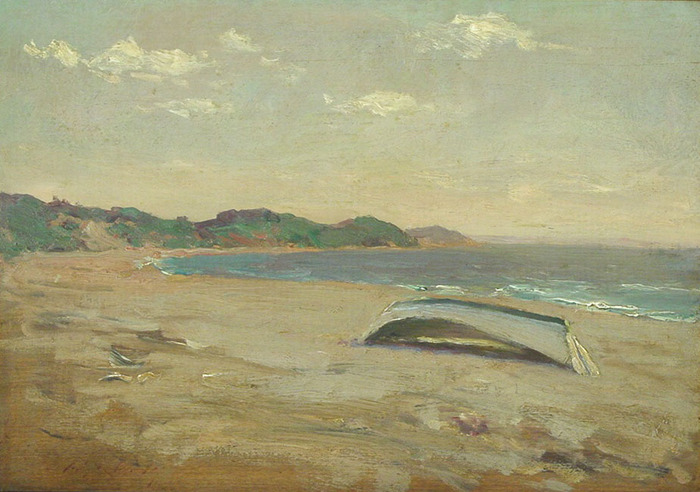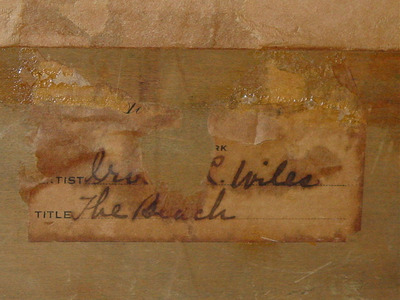-
Irving Wiles (1861 - 1948)
-
Paintings
-
- Irving Wiles
- (1861 - 1948)
- New York Artist
- Size: 12 x 16
- Frame: 14 x 18
- Medium: Oil
- Circa 1910
- The Beach Long Island
- View details
- Contact for Price & Info
-
-
Biography
Irving Wiles (1861 - 1948) New York Artist
Born in Utica, New York, Irving Wiles was educated at the Sedgwick Institute, Great Barrington, Massachusetts. He considered a career as a violinist, but rather began to learn the basics of art from his father and Lemuel Maynard Wiles, at the age of 17. The following year he had exhibited at the National Academy of Design. He then studied at the Art Students League under James Carroll Beckwith and William Merritt Chase from 1879 to 1881. Chase not only influenced his style, but also became a lasting friend, choosing Wiles to complete the portrait commissions left unfinished at his death. In 1882 he went to Paris as a student of Carolus-Duran, Boulanger, and Jules Lefebvre, attending the Academie Julien. When Wiles returned to New York City in 1884, he found it necessary to divide his time between painting and illustrating for Century, Harper's and Scribner's magazines, since portrait work was not sufficient. In 1897 he was elected to the National Academy of Design and thereafter more time was dedicated to his oil figure and portraiture work. With a "free, dashing style," he established himself as a portrait, landscape, and genre painter in New York. He won numerous prestigious prizes in New York and at the Paris Salon. He was one of eight painters commissioned by the National Art Committee to paint the history of World War I. President Roosevelt and William Jennings Bryant sat for Wiles. In about 1895, he and his father began conducting summer art classes at his father's Silver Lake Art School on the North Fork of Long Island. Subsequently, Irving purchased land and built a studio at Peconic and was there until his death in 1948 at the age of 87.

